When it comes to China’s historical heritage, what comes to your mind first? The Forbidden City? The Great Wall? Or the Summer Palace? Of course, these attractions are most popular with travelers from China and beyond. However, China’s heritage is more than that. If you are eager to have an unforgettable cost-effective heritage tour in China, it is perfect for you to join this 12-day Cheap China Heritage Tour from Beijing. Apart from the most famous sites included in most budget Beijing tours, you will pay a family visit in Beijing’s Hutong and go shopping at Silk Street Market through this cheap Beijing tour package. After that, you will go to Ping Yao to walk around the Pingyao Ancient Town and then continue heading to Xi’an to admire the Eighth Wonder of the World – Terra Cotta Warriors and Horses. At last, you will fly to Shanghai to witness the modernization of this metropolis and explore the cheap places to shop in Shanghai. Throughout this 12-day Cheap China Heritage Tour, you will get an incredible tourism experience in China with excellent quality for a good price. Stop hesitating and come to join us!

Today you will arrive in Beijing, and your local tour guide will pick you up at the airport. Then you will be transferred to the hotel for a good rest. During our cost-effective 12 Days Cheap China Heritage Tour, you can receive superior service with less money.
Beijing is the capital city located in the north of China with a total area of 16,410.54 square kilometers. It has a population of 21 million. The climate is hot and rainy in summer and cold and dry in winter. It is an ancient capital with a history of more than three thousand years. There are many places of interest, such as the Forbidden City, Summer Palace, Ming Tombs, the Great Wall, and the Temple of Heaven.
This morning, we will go to Tian’anmen Square which is located in the center of Beijing. It’s the largest city square in the world, which is 880 meters long from north to south and 500 meters wide from east to west. It covers a total area of 440,000 square meters and can accommodate 1 million people for grand gatherings. You will see the Monument to the People’s Heroes which is in the center of Tian’anmen Square. It was built in 1958 by the government of the People’s Republic of China to commemorate the revolutionary martyrs in modern and contemporary Chinese history. It has a total height of 37.94 meters, which is inscribed with eight gilt Chinese characters written by Mao Zedong.
Then we will continue going north and come to the Forbidden City (closed each Monday), the imperial palace for the 24 emperors during the Ming (1368-1644) and Qing (1636-1912) dynasties. Among these emperors, Emperor Kangxi was the emperor who ruled the country for the longest period of time, lasting for 61 years from 1661 to 1722. The Forbidden City covers an area of 720,000 square meters with more than 70 palaces of different sizes. You will follow your tour guide to visit the most magnificent palaces. One interesting thing you will note is that there are bronze vats outside the palaces. You may wonder what these vats are used for. Due to the wooden structure of the palace complex, the 308 bronze gilded vats played an important role in fire protection during the Ming and Qing dynasties. A vat can store more than 3,000 liters of water. Once the fire broke out, people could get water nearby to extinguish the fire in time to reduce the loss.
Next, we will go to Jingshan Park, which is located on the central axis of Beijing. It faces the Gate of Divine Prowess of the Forbidden City in the south across the street. It is the imperial garden during the Ming and Qing dynasties. The park has the ginkgo garden, begonia garden, peony garden, peach garden, apple orchard, vineyard, and persimmon forest. During the Ming and Qing dynasties, the emperor together with his empress and concubines came here to take a walk and admire beautiful flowers.
After lunch, we will visit Summer Palace where emperors spent their summertime. It is the most complete imperial garden in China, known as the “Royal Garden Museum”. In the garden, the most attractive is the Long Corridor which is about 728 meters long. It is the longest corridor in the world. It was built in 1750 during Emperor Qianlong’s reign. Emperor Qianlong built the corridor for his mother so that she could walk outdoors regardless of bad weather. Walking along the Long Corridor, you can see a picturesque view of Kunming Lake in the south and look up to the Longevity Hill in the north.
Optional Activity 1:
In the evening, you could go to Red Theater to watch an excellent Kung Fu show-Legend of Kung Fu. It is a large-scale stage play performed from 19:30 to 20:50 every day. This stage play has been performed in the Red Theater for 17 years since July 2004, and the Red Theater is packed out every day. It tells the story that a young boy who is away from his mother at a young age becomes a little monk named Chunyi in the Shaolin Temple. With constant practice, he finally becomes a Kung Fu master. During the play, you will see various kinds of Chinese Kung Fu styles, such as tiger fist, snake fist, single-whip skills, and double-whip skills.
Optional Activity 2:
Peking Roast Duck is an ancient delicacy that originated in the royal court. But now, the roast duck has become a favorite food for people from China and abroad. It contains rich unsaturated fatty acids which help soften the heart and cerebral vessels. The Peking Roast Duck has crisp skin and its meat is fatty and tender but not greasy when you taste. You can put several pieces of the roast duck with a bit of sweet soybean paste on a steamed pancake. Then you can add some sliced cucumbers and green onions and roll up the steamed pancake. It is so delicious that you must like it.
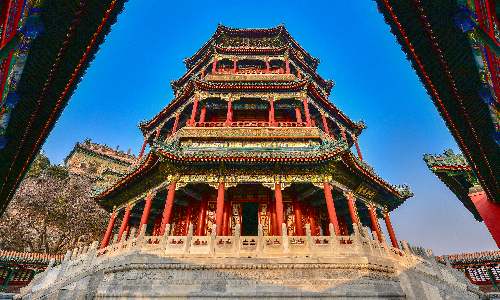
This morning, we will drive northward to the Ming Tombs, 50 kilometers northwest of Beijing. It takes about 1 hour to get there. 13 emperors of the Ming Dynasty were buried here, so it is also known as “The Thirteen Ming Tombs”. Ding Tomb is where Emperor Zhu Yijun, the 13th emperor of the Ming Dynasty, and his two empresses were buried. It’s situated at the foot of Dayu Mountain and was built between 1584 and 1590. It is one of the three largest tombs among the 13 Ming Tombs with an area of 182,000 square meters. It’s also the only tomb that has been excavated among them so far.
After lunch, we will drive you to the Mutianyu Great Wall, one of the best-preserved parts of the Great Wall. It is about 50 kilometers away from the Ming Tombs. We will drive northeast for about 70 minutes to get there. Mutianyu Great Wall is a well-known tourist destination both in China and abroad. You can see the most beautiful scenery on the Mutianyu Great Wall in several ways. In addition to climbing the Mutianyu Great Wall on foot, you could take a cable car or chairlift up. The most exciting way is to take the chairlift up, and then take the toboggan down. This may leave a deep impression on you. If you are over 60 years old, we recommend you take the cable car. If you share the beautiful landscapes at the Mutianyu Great Wall with your friends in your hometown, they will surely admire your trip.
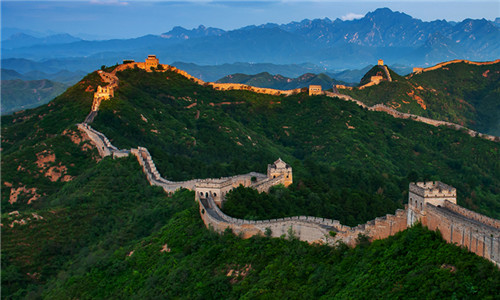
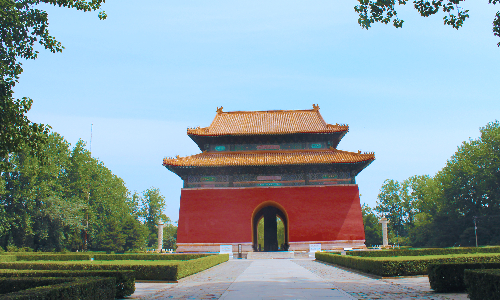
 Pingyao
Pingyao This morning, you are going to visit the Temple of Heaven. It was built for the emperors to worship the God of Heaven and pray for a good harvest during the Ming and Qing dynasties. From ancient times to the end of the Qing Dynasty, the royalties had held the ceremony of worshipping heaven for more than 5,000 years. They believed that the God of Heaven was the only supreme ruler of the whole world. It is the God of Heaven that granted them the power to rule the entire country. They were in awe of the God of Heaven very much. Therefore, the ancient emperors of the Ming and Qing dynasties came to the Temple of Heaven to worship the God of Heaven and pray for blessings. Nowadays, it is a very popular park for people to take exercises and have fun.
Then your local guide will take you to the Hutongs near the Shichahai area and visit a local family there. A Hutong in Beijing is an ancient alleyway. Taking a rickshaw is the most attractive way to explore the Hutongs. As you go through the historical Hutongs, you will enjoy the view of the old days of Beijing. In recent years, people from foreign countries regard visiting Hutong as a must-visit to learn about some traditional folk customs. After the rickshaw tour, you will step into a quadrangle courtyard and chat with the house owner to learn about the traditional lifestyle in Hutongs.
After lunch, we will go to the Silk Street Market. It is close to the international CBD business circle, with a prominent geographical location and convenient transportation. It is the most influential international shopping market in China. Silk Street Market opened in 1978. It gathers a wide range of traditional Chinese goods, such as silk, pearls, porcelain, tea, and so on. It is worth mentioning that most of the sales clerks here can speak English fluently. You don’t need to worry about communication with them. You can buy delicate souvenirs as gifts for your family members and friends here.
You will be transferred to the railway station. Then you will take the estimated train K609 23:55/09:29+1 to Pingyao. You will stay overnight on the train and save more money with the soft-sleeper ticket than staying in a hotel. There are four soft sleepers in one soft-sleeper compartment and six hard sleepers in one hard-sleeper compartment. We arrange soft sleepers for you, so it’s more comfortable. You can have a good rest along the way.
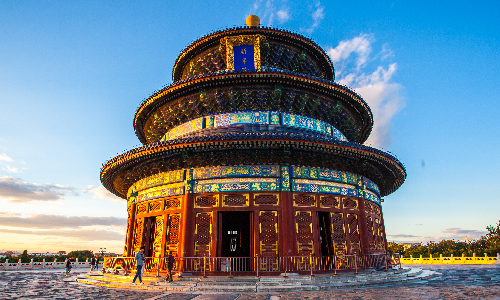
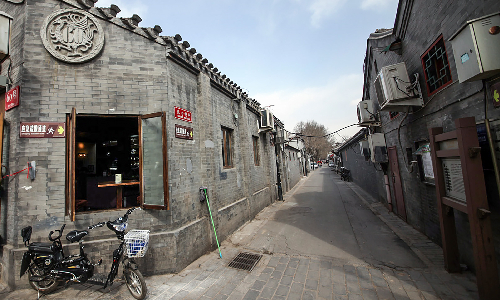
Our guide will take you to have breakfast and then drive to Pingyao Ancient Town. It is located in the central part of Shanxi Province, with a history of more than 2,700 years. It was first built in BC 1046 and expanded in AD 1370. Being the most complete existing ancient town in the Han ethnic region of China, it was inscribed on the World Heritage List as a cultural heritage in December 1997. There are four main streets, eight side streets, and 72 lanes in Pingyao Ancient Town, which form the pattern like a turtle’s back. You can take a leisurely walk in the ancient town to visit the major attractions. For example, you will see Rishengchang Draft Bank. It was founded in 1823 by Li Dajin, a wealthy businessman from Pingyao County. The general bank is located on the West Street of Pingyao County. It covers an area of more than 1,600 square meters. It is a pioneer in China’s national banking industry and once controlled the economic lifeblood of the entire Qing Dynasty in the 19th century. Its branches spread to more than 30 cities in China, as far as Europe, the United States, Southeast Asia, and other countries. You will also notice the Ancient City Wall which was built in the late Western Zhou Dynasty (1046-771 BC). It was made of brick and stone. The Ancient City Wall is square with a height of 10 meters. The body of the wall is filled with earth inside and wrapped with grey bricks outside. There are 77 gutters, 3,000 crenels and 72 towers on the Ancient City Wall, and four turrets at the four corners. Like a fortress, the Ancient City Wall protected the people living in Pingyao Ancient Town, which made Pingyao Ancient Town a paradise away from wars.
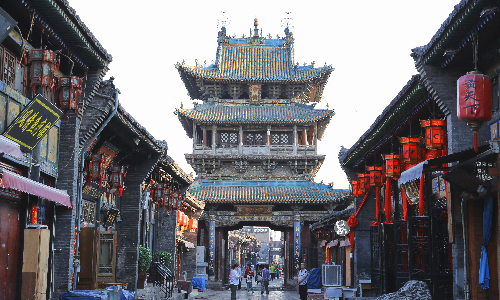
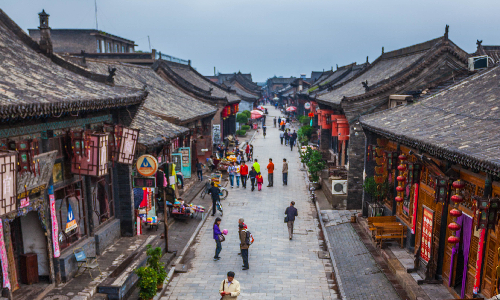
 Xi’an
Xi’an After breakfast, we will drive southwest for about an hour to Wang Family Courtyard, about 50 kilometers away from Pingyao. It was built by the Wang family in Jingsheng Town for more than 300 years from the Ming Dynasty to the Qing Dynasty. It consists of five alleys, six forts, and one street. The Wang Family Courtyard includes more than 100 courtyards and more than 1,000 rooms. It is the largest existing building complex in Shanxi Province, also known as the “Civil Forbidden City”.
After lunch, we will drive northeast for about 40 minutes to the Zhangbi Ancient Castle. It is 20 kilometers away from Wang Family Courtyard. It is the only castle site surviving in China with a dual purpose – military use and civil use. There are many historical sites remaining here, such as the ancient underground tunnels in the Sui and Tang dynasties, the tombs in the Jin Dynasty, the stage in the Yuan Dynasty, as well as the folk houses in the Ming and Qing dynasties.
After that, you will be transferred to the railway station. Then you will take the estimated train 2095 20:54/05:40+1 to Xi’ an. You will stay overnight on the train to save money.
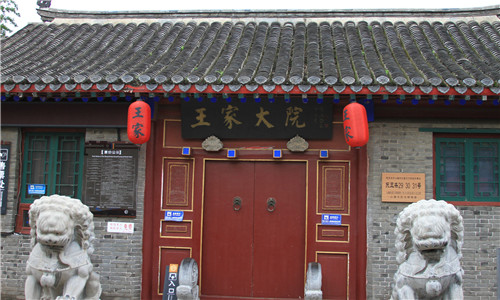
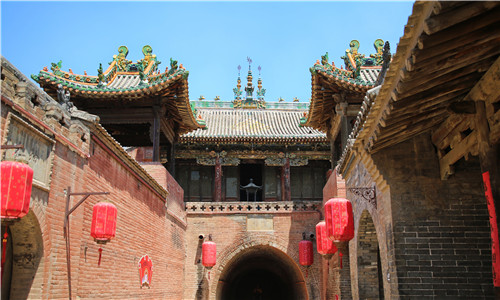
In the morning, your private guide will wait for you at the train station and take you to have your breakfast. After breakfast, your guide will show you around Xi’an. Xi’an covers 700.69 square kilometers with a population of 12.95 million. Xi’an has a long history that the emperors of thirteen dynasties chose Xi’an as the capital. There is also a variety of delicious food in Xi’an. With our professional guidance and service, you will enjoy an excellent trip in Xi’an with lower costs.
First, we will drive for about 1 hour to visit the Terra Cotta Warriors and Horses Museum. It is located in the northeast of Xi’an, about 45 kilometers away from the city center. China’s first emperor – Qin Shi Huang commanded to build the Terra Cotta Warriors and the Horses to help him rule the underground empire after his death. In 1974, a peasant discovered these cultural relics when digging a well. The terra cotta figures differ in height, hairstyle, and uniform. The most amazing thing is that even after 2,000 years, the bronze swords are as sharp as new ones, without being corroded or rusted.
Then we will drive to visit the Big Wild Goose Pagoda which is located in the Ci’en Temple. In 652, Xuanzang Master built the Big Wild Goose Pagoda to preserve the Buddhist texts he brought back from ancient India via the Silk Road. They are the most precious treasures in Buddhist history. These Buddhist texts were all written on palm leaves because there was no paper in ancient India at that time. On the fourth floor of the Big Wild Goose Pagoda, there are two pieces of Palm-leaf Scripture with dense Sanskrit words on display. It is said that there are less than 10 scholars who can read the scriptures in the world.
After visiting the Big Wild Goose Pagoda, your guide will take you to the Muslim Quarter. You will stroll around the famous snack streets in Xi’an and taste all sorts of desserts and snacks. You will get surprised by the flavor of these appealing snacks. Roujiamo with shredded braised meat stuffed in baked bread is called the Chinese-style burger. Zenggao is made of sticky rice and jujube and it tastes sweet. Mutton or Beef Shashlik is the representative of Moslem food in Xi’an and is also famous all over China. These kinds of food are very popular among local people and travelers from all over the world.
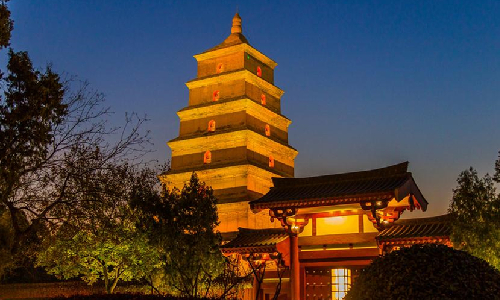
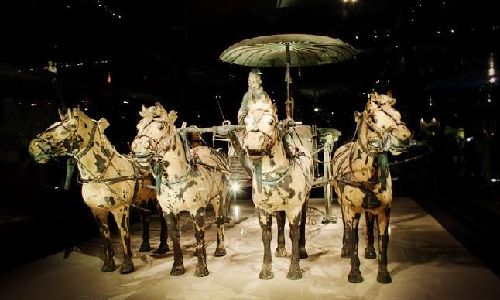
Today, you will have a free day to explore Xi’an by yourself. We recommend you some admission-free but must-see attractions to reduce your expenses.
Free Time Suggestion:
The first one is Shaanxi History Museum (closed each Monday). This museum contains a collection of over 1,700,000 pieces of cultural relics, ranging from simple stone tools used by ancient humans to various implements used in contemporary social life. The collection here spans more than one million years. By admiring these priceless exhibits, you will learn about how the ancient Chinese ancestors lived and the development process of Chinese society. The museum has a “free admission” system for the public. If you are interested in Chinese history, it’s a must to visit.
The other one is Great Tang All Day Mall. It is the most famous pedestrian street in Xi’an with the flourishing Tang culture as the background and various Tang-style elements as its main feature. It is 2,100 meters long from north to south and 500 meters wide from east to west. The Great Tang All Day Mall combines a variety of functions, such as sightseeing, shopping, catering, and entertainment. You can go along the central axis of Great Tang All Day Mall to appreciate the grand sculpture landscapes, which portray the great historical figures in the Tang Dynasty including Emperor Li Shimin, the first and only female emperor Wu Zetian, and Master Xuanzang. It’s quite worth of visiting and experiencing the Great Tang culture.
 Shanghai
Shanghai Today, you will be transferred to the airport and head to Shanghai by taking the estimated flight FM9202 13:00/15:05. Upon your arrival in Shanghai, your tour guide will be waiting for you at the arrival lobby and then transfer you to the hotel. After a good rest, you only need to follow your guide to explore Shanghai in the remaining days. With our professional guidance and first-class service, you will enjoy an excellent trip in Shanghai without spending too much money.
Shanghai covers 6,340.5 square kilometers. With more and more migrants in recent years, Shanghai has a population of 24.87 million. It is a city that combines modern style with classical elements. For example, you can see the modern Oriental Pearl TV Tower and the ancient Peace Hotel. You also can stroll on the Bund to see a group of old buildings with different styles and look up to the towering skyscrapers on the other side.
After breakfast, you will start your tour in Shanghai by visiting Jade Buddha Temple first. The Jade Buddha Temple is a renowned Buddhist temple built in 1882 with a history of almost 140 years. Constructed in a symmetrical style, it has over 200 rooms holding many Buddhist statues and Buddhist classics. Among them, two Jade Buddha statues have made the temple famous around the world. One is a sitting Buddha of 1.95 meters tall in the Jade Buddha Chamber, the other is a smaller reclining one with a height of 0.96 meters in the Reclining Buddha Hall. You will be impressed by their gentle smiles and elegant gestures, as well as the exquisite carving. The Jade Buddha Temple has also attracted many famous foreign visitors, including the wife of former President Ronald Wilson Reagan of America, Princess Margaret of the UK, and the wife of the President of Brazil.
The next attraction you will visit this morning is Yu Garden (closed each Monday), a classical private landscaped garden owned by Pan Yunduan and his family. Pan Yunduan was a high-ranking official in the Ming Dynasty. It is said that the garden was built for Pan’s father. In Chinese, “Yu” means happiness. So Yu Garden is also known as Happiness Garden, which means to give the aged a happy life. Sansui Hall is a major architecture of Yu Garden, which used to be a hall for the officials in the Qing Dynasty to meet guests and hold celebrations. In front of Yangshan Hall, there is the Great Rockery, the largest and the oldest rockery in the regions south of the Yangtze River. With a height of 141 meters, it used to be the highest point of Shanghai. In addition, there is an old ginkgo tree in front of the Wanhua Chamber. Can you believe that? The ginkgo tree is more than 400 years old!
After visiting Yu Garden, you will go to Shanghai Old Street to experience an old Shanghai of 100 years ago, which is different from its modern and fashionable aspect. Shanghai Old Street is divided into two sections according to different architectural styles. The east section retains the folk houses in the Republic of China (1912-1949) and the west section is lined with pseudo-classic buildings in Ming and Qing dynasties. Walking along the street, you will also find various delicious snacks. You can have a taste of Small Steamed Buns (Xiaolongbao), Green Rice Balls (Qingtuan), and Sweet Dumplings (Tangyuan).
In the afternoon, your guide will lead you to the Oriental Pearl TV Tower, one of the landmarks of Shanghai completed in 1994. A lot of tourist groups will ascend Shanghai Tower to enjoy the panorama of Shanghai because it is the tallest building in China. Of course, the expense is relatively high. However, we arrange the Oriental Pearl TV Tower for you, where you will see the same beautiful view and the cost is low. There is a revolving restaurant in the middle sphere at the height of 267 meters, which can accommodate 1,500 people to enjoy a buffet at the same time. If you have a generous budget, you can come here to have a buffet in the evening while admiring the splendid night view below.
After enjoying the beautiful scenery on the Oriental Pearl TV Tower, you will visit the Bund. It has been the most popular landmark of Shanghai for a century. It’s a waterfront stretching 1,500 meters along the west bank of the Huangpu River. There is a group of old buildings in different styles standing on the Bund. On the north end of the Bund, there is a bridge named Waibaidu Bridge. It is the best place to enjoy the sunset. When the sun goes down, the beautiful twilight will create an atmosphere of romance and peace, attracting a great number of young couples to take pictures here.
Walking through the Bund, we will go to Nanjing Road. It is divided into two parts, Nanjing East Road and Nanjing West Road. Nanjing East Road is mainly a fair-price commercial area while Nanjing West Road is one of the most luxurious and fashionable shopping areas in Shanghai. There are plenty of stores to meet your different consumption needs and standards. It’s a good opportunity for you to buy some gifts for your friends and family members.
Optional Activity 1:
In the evening, you can choose to experience the Huangpu River Night Cruise, which lasts for about 60 minutes. The Huangpu River is the mother river of Shanghai. If you stand on the deck, you can see the fascinating night view along the banks of the Huangpu River. You can also enjoy snacks, drinks, and performances during the cruise. You can feel the enjoyment and pleasure at every moment of your cruise.
Optional Activity 2:
You can go to Shanghai Center Theatre to watch a Shanghai-style acrobatic show – “Xuan-SPIRAL”. The performers of Shanghai Acrobatic Troupe have created innovative performances of more than 100 varieties of acrobatics, circus, and magic over the past half a century. You will enjoy an unimaginable acrobatic performance presented by more than 200 professional actors during the show.
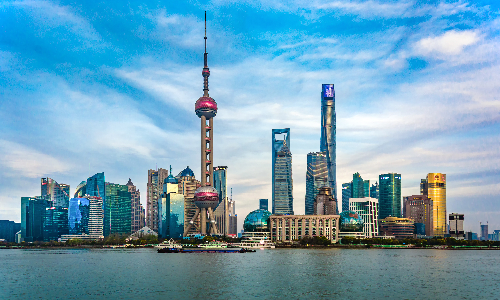
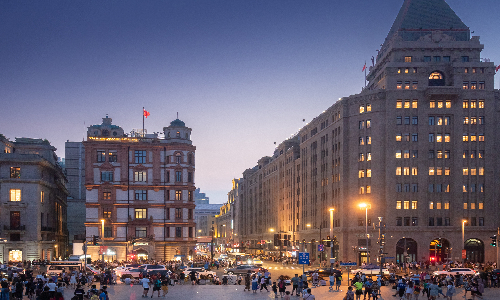
After breakfast, we will drive toward the west for about 1 hour to Zhujiajiao Ancient Town, 48 kilometers away from the center of Shanghai. There are 36 old stone bridges spanning the river. Among them, the most famous Fangsheng Bridge is the largest five-arch stone bridge in Shanghai. You can hear the dulcet sound of the running water and enjoy the tranquil atmosphere of the town. Besides, there are a lot of special snack shops along the streets, including the famous Zongzi (rice dumpling) and Tang’ou (candied lotus root), and a variety of delicate cakes.
After lunch, you will have a free afternoon to visit other places you like in Shanghai.
Free Time Suggestion:
The first one is Tianzifang Market, art and creative industrial area in Shanghai. Built in 1993, it is located in a traditional residential area. Look, the green letterbox of the 1980s is still in use. In addition to creative shops, galleries, and photography exhibitions, various cafes are everywhere. In the afternoon, you can order a cup of coffee, feel the cool breeze on your face and enjoy the bright sunshine.
The other one is to stroll around the Xintiandi, where you will place yourself in the early 20th century in Shanghai. However, if you enter each building, you will have a unique experience of fashion. It is a symphony of yesterday, today, and tomorrow of Shanghai. Visitors from both China and abroad can taste the unique culture of Shanghai.
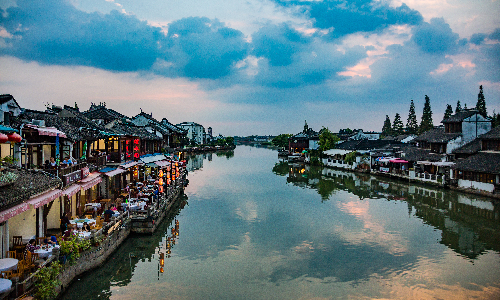
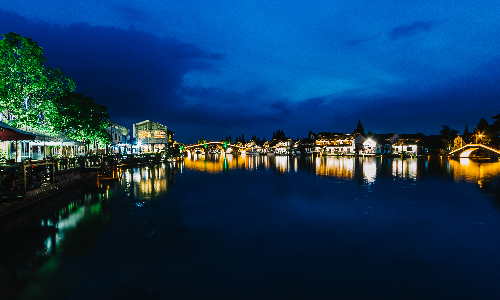
Today your 12-day Cheap China Heritage Tour comes to an end. Your tour guide will accompany you to the airport and say goodbye to you. Then you will board your flight back home. We wish you a pleasant homebound journey.
Author: Chen Yajie
Proofreader: Vivian Zhou
| City | Five Star hotel list | Four Star hotel list |
|---|---|---|
| Beijing | Sunworld Dynasty Hotel Beijing Wangfujing | Sunworld Hotel Wangfujing |
| Pingyao | Pingyao Yide Hotel | Pingyao Dejuyuan Guesthouse |
| Xi'an | Tianyu Gloria Grand Hotel Xi'an | Sunworld Dynasty Hotel |
| Shanghai | Ocean Hotel Shanghai | Courtyard by Marriott Shanghai Central |
 |
![]() About your child or infant, please contact us for a discounted price.
About your child or infant, please contact us for a discounted price.



We started with a few days in Beijing & ended in Shanghai, from where we visited the Forbidden City and Great Wall. In between we visited Terra Cotta Warriors Museum, Panda Base, Shanghai Disneyland.

We had a wonderful holiday in China which will remain long in the memory. China is a breathtakingly beautiful country full of splendid temples and palaces, mountains and rivers, peaceful rural scenes and bustling shopping streets.
 QUICK ENQUIRY
QUICK ENQUIRY